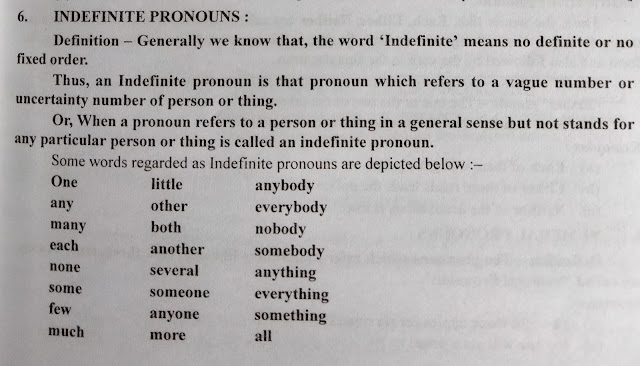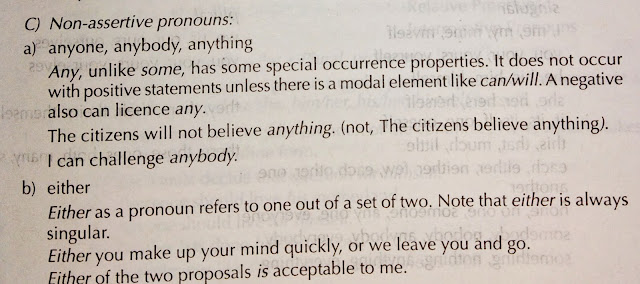GRAMMAR: KINDS OF PRONOUNS
1.
2.
20.
A defining relative clause identifies who or what we are speaking about, whereas a non-defining relative clause just gives us more information about who or what we are speaking about. ... A non-defining relative clause is separated from the main part of the sentence by commas.
21.
23.
22.
1. What else can the students do now? (They cannot do anything now.)
2. Who else is going to listen to us? (No one is going to listen to us)
28.a.
*'Each' is a distributive pronoun.
*'Either' is a distributive pronoun.
*'Neither' is a distributive pronoun.
34. NUMERAL PRONOUNS
A numerical pronoun, either cardinal number (one, two) or and ordinal number (first, second) replaces noun and specifies a quantity of it in the form of a specific number.
Function: It indicates how many of a group of people, places or things do or are something.
Examples: 46, three
1. There are 312 students in our college preparation program, 46 have part-time jobs.
2. All of the textbooks were returned to the resource room, but three are quite damaged.
3. Jane bought tomatoes, but two were bad.
4. The red car was first and the green car was second.
5. One will be enough.
Note: When a number is placed before a noun, it is a numerical adjective that describes the noun; example: Junior is in the second grade.
40.













































No comments:
Post a Comment